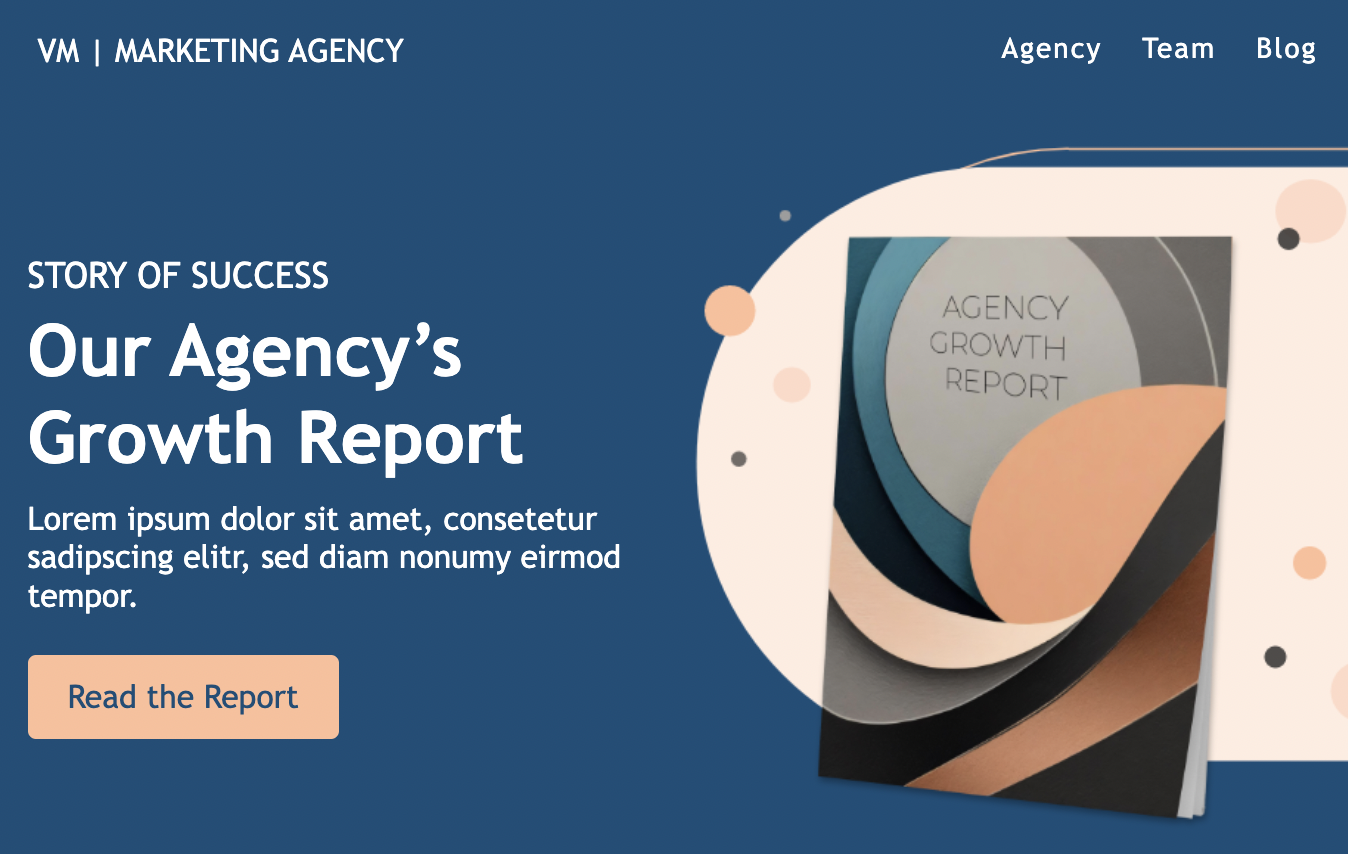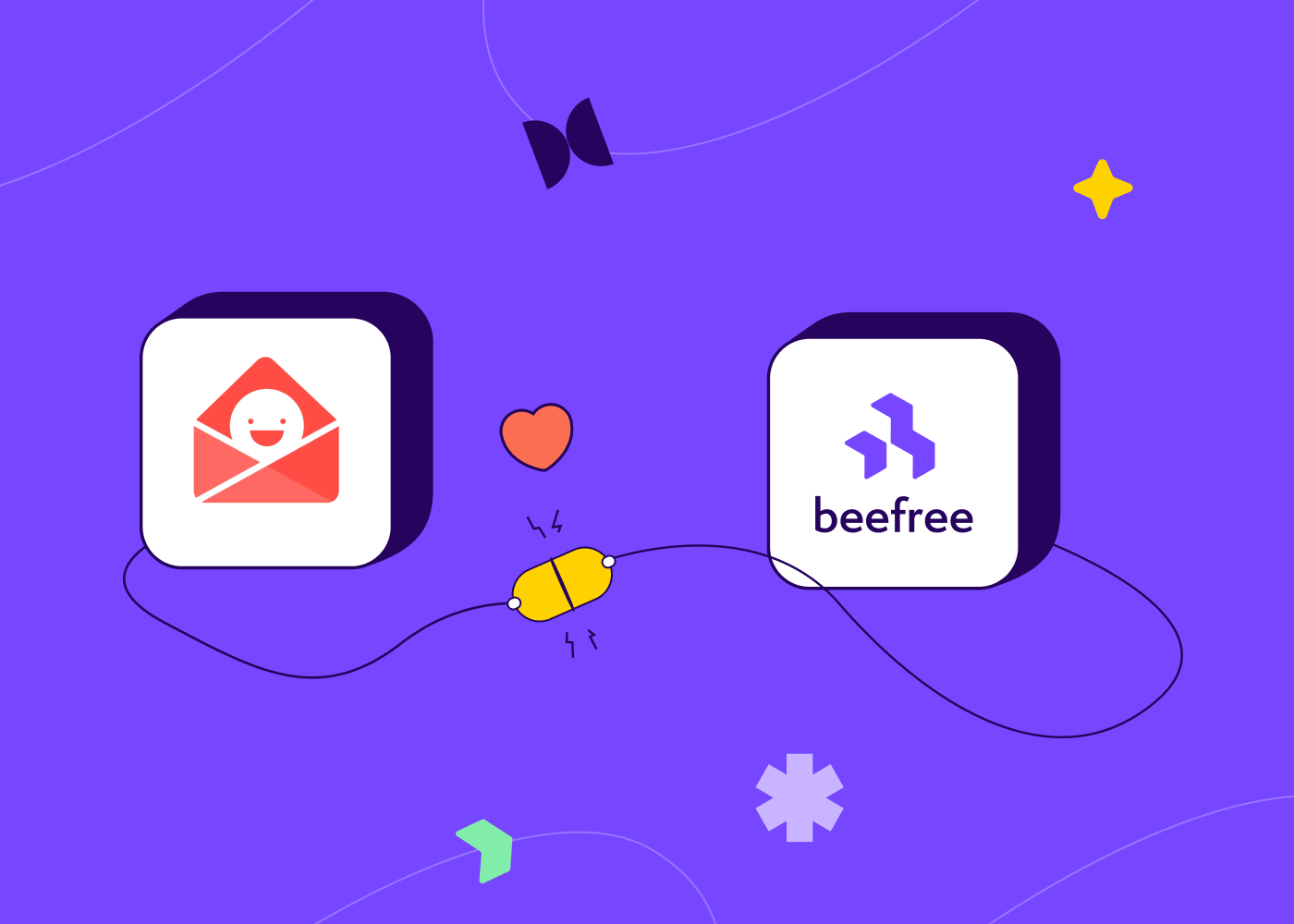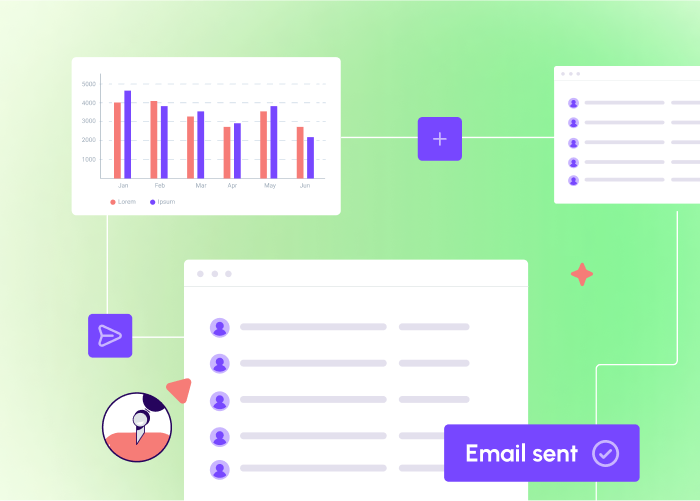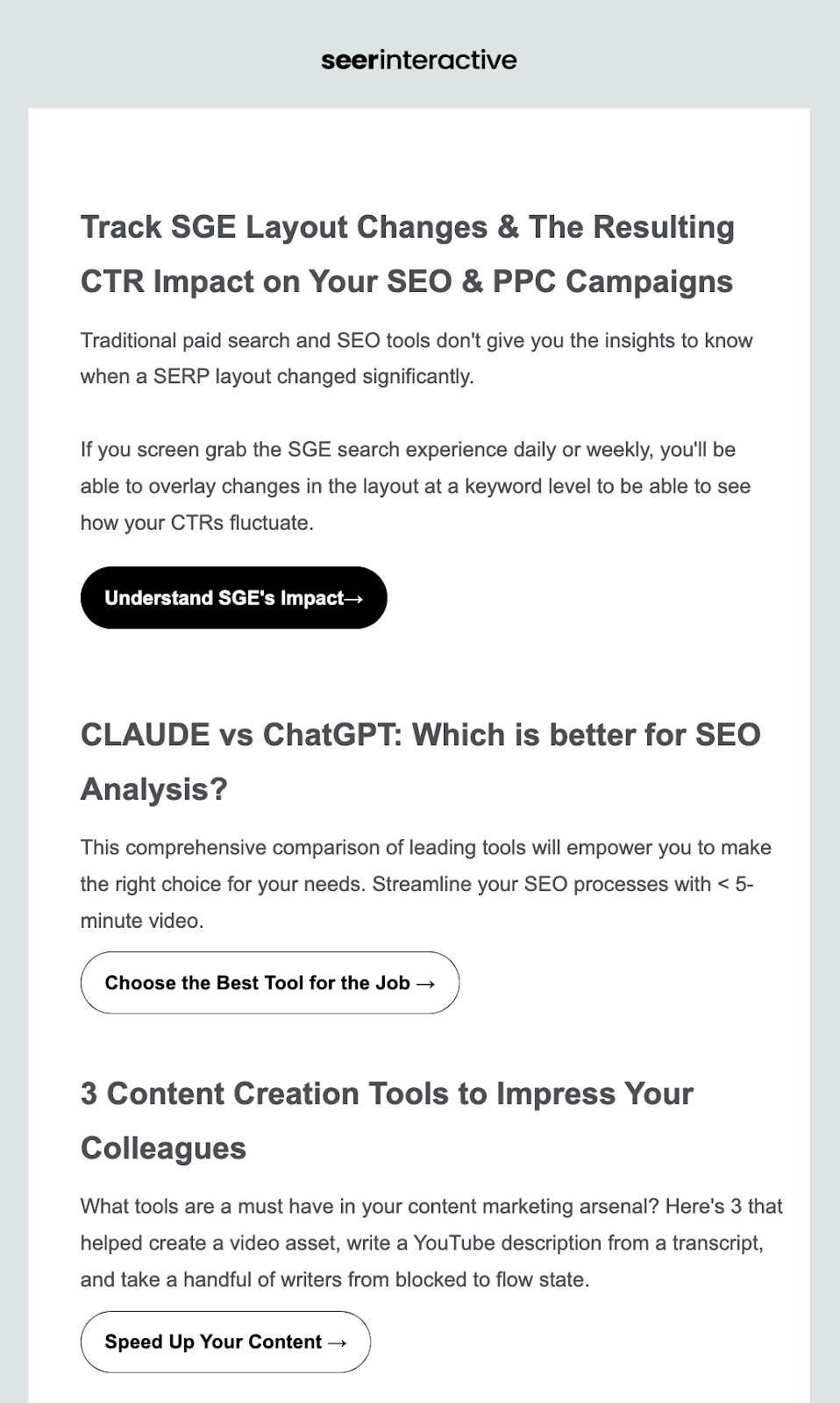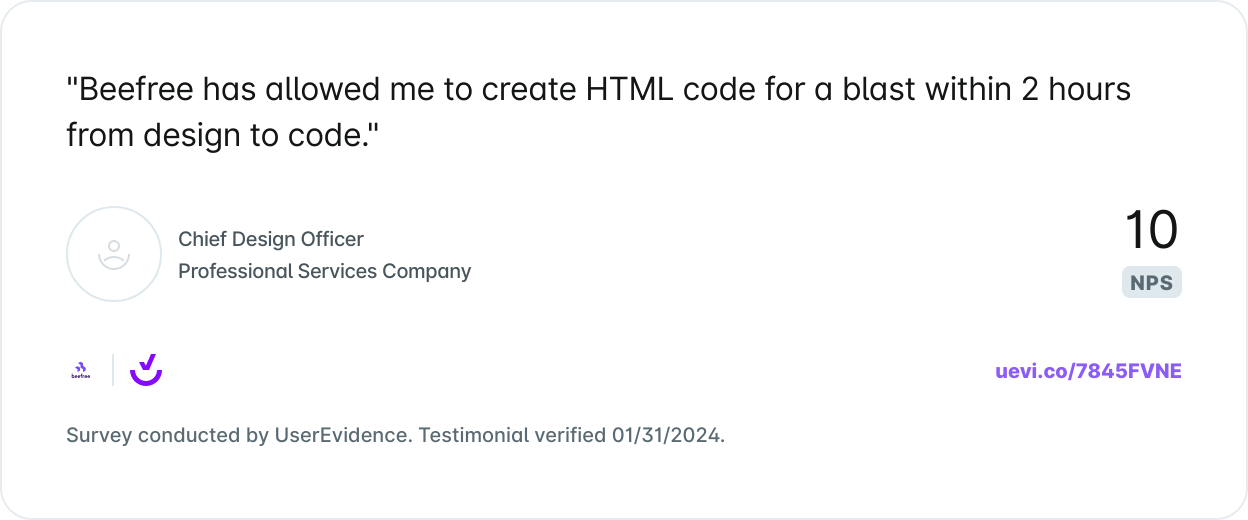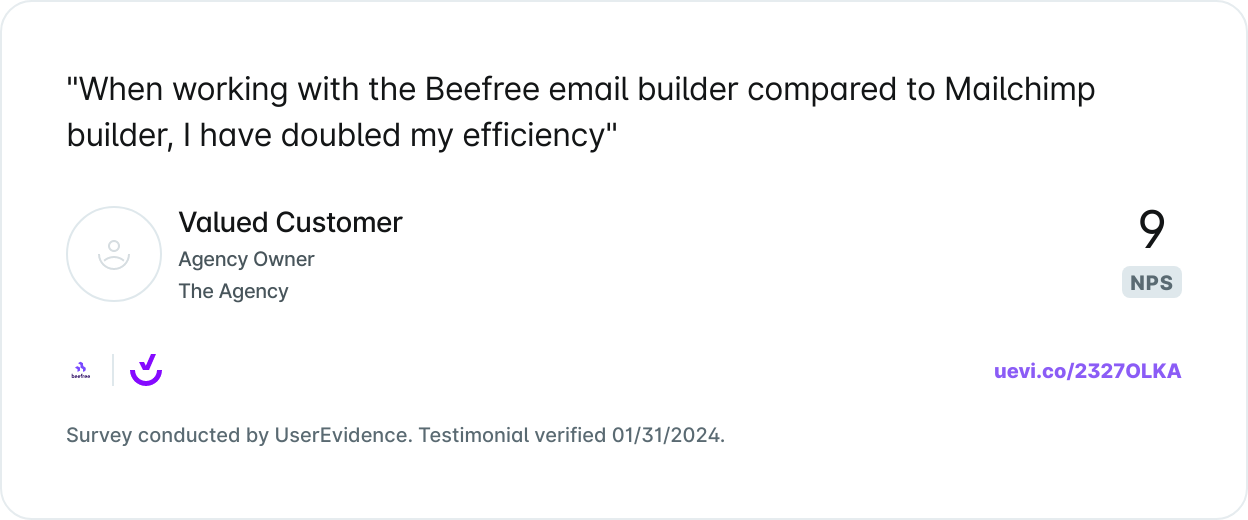Originally published on September 3, 2019. Last updated October 8, 2021.Establishing your ecommerce business in the digital world is overwhelming due to the sheer number of moving parts and channels. The good news is you don’t have to be everywhere at once. Strategically focusing on one communication channel allows you to create genuine connections and stand out from the crowd.Email marketing is the best marketing channel to convert ecommerce website visitors into customers because it’s relatively inexpensive and used by every generation, including internet-savvy Gen Z and millennials.Recent data from Barilliance states that nearly 18% of businesses with email marketing campaigns achieved ROIs over $70 per every $1 invested.How can your business achieve these insane ROIs? Start by creating the best customer experience. A well-planned email sequence builds trust with your customers and encourages repeat buys.Let’s start with some basics to learn how to best connect with your customers.
What is ecommerce email marketing?
Ecommerce email marketing is a marketing strategy that uses emails to guide potential customers through the buying process. This type of marketing is all about building relationships and inspiring customer loyalty to increase repeat purchases.Ecommerce email marketing includes both promotional emails (new products, offers/discounts) and transactional emails (abandoned cart, receipt of payment, shipping confirmation).Creating email campaigns builds brand loyalty by opening an exclusive line of communication to email subscribers. Unlike social media or other public advertising platforms, email adds a personal touch. Be sure to implement these email design best practices when creating your ecommerce email series:
- Personalize
- Offer exclusive discounts to returning customers
- A/B test
- Optimize for mobile
- Create a referral program
- Ask for reviews and feedback
- Notify customers when missing items are back in stock
- Follow up on leads
- Track which emails are most responsive
- Include an unsubscribe option
These ecommerce email templates take best practices into consideration. Customize them to align with your brand identity.So far so good? Let’s tackle these top tips to gain some serious customer traction with your ecommerce email sequence.
Best tips to leverage your ecommerce email marketing
The email address has become our de-facto digital passport and a powerful marketing tool. When used correctly, it allows businesses to build long lasting relationships with their most loyal customers.When it comes to designing your own ecommerce email campaign, create a solid sequence with the following best practices in mind.
1. Establish your brand identity
Your ecommerce brand identity is your business personality. It’s how your customers perceive your business and the impression it makes and carries across your customer base.When forming your visual brand identity think about:
- Name and taglines: Define your acronyms and consistent terminology for your brand.
- Images: Optimize your images and make sure to find balance between images and text.
- Email and web domains: Develop and stick to consistent layouts. Will your customers recognize your brand across all types of content?
- Colors: Implement a color scheme for your emails and keep those brand colors consistent across all content.
- Fonts: Consider the nature of your business and decide on a web-safe font.
Establishing your brand identity with a trusted logo, consistent fonts/colors and an inviting email address will ensure that customers open your emails. The consistency gives a reputable first impression. It builds credibility and trust for a long term relationship with those customers.
2. Use each email as an opportunity to engage
Remember that every email you send is an opportunity to engage with your customer base. But it’s not solely about the campaigns themselves, there are other points of contact that will help you engage and connect further with your customers such as:
- Newsletters
- Appointment confirmations
- Receipts
Add more emails to your collection—develop a structured marketing calendar and a strong welcome series to get started. Make sure to automate them to make your life easier. When there are so many ways to connect with customers, it’s best to establish a sturdy system so there’s less on your plate day-to-day.Then, be sure to build your email list with opt-in opportunities and free offers to incentivize your customers. This will build loyalty and strengthen your connection with them.
3. Adopt a mobile-first approach
Think mobile first: bigger buttons, bigger text, simple message structure and responsive layout. Plenty of emails in your inbox unfortunately aren't optimized for mobile, so make sure to use a design tool that ensures you’re creating email campaigns that render correctly.Massimo Arrigoni, CEO of BEE explains:
“We need to think of our customers first having a mobile experience of our email messages, and then, maybe, a desktop one. That’s what “mobile-first” means: defaulting to mobile: thinking of a mobile user before any other user. And flipping the User Experience table in favor of a mobile experience has a far-reaching impact on email design, web design, online store checkout design, etc.”
4. Design uncluttered, focused messages
Nowadays, attention spans are super short. Customers browse through their inbox at the speed of light to quickly access the information they need or what’s interesting to them.Because of this, it’s best to keep email messages (optimized for both mobile and desktop) focused, clearcut and uncluttered with minimal topics. Best practice is to have only one call to action. If you need to use multiple call-to-actions, make sure those different sections of the email are visually separated using plenty of white space, different background colors and full-width images.
5. Choose the right design tools
Decide on the design tools that work best for your ecommerce business. For email design, BEE Pro offers an extensive collection of ecommerce templates to build from or use as inspiration for your email sequence.If you need graphics for your business, you can DIY or outsource through a trusted platform like Canva or Adobe Photoshop.
6. Design with the email client in mind
Creating emails that render correctly is essential to a successful email marketing strategy. Develop emails with the email client in mind. What does that mean? Well, take a look at your customer base and find out which email clients they’re coming from. Are the majority from Gmail or Outlook? Maybe they’re coming from Apple. Study up on which email client the majority of your customers use and then design emails following the best practices for that specific email client.
7. Include email elements that intrigue your target audience
Insert new elements into your emails like GIF animations and even live content like countdown timers and dynamic maps. Make sure the first frame of your email is something that your target audience will get excited about. Try new elements, track results and get creative.
8. Make it modular
Creating a modular design system means making sure each touchpoint is replaceable without requiring other parts of the system to be significantly modified. This goes for both your ecommerce email marketing campaign and the specific functionalities that drive your entire ecommerce business.Modular design principles:
- Each part of a system, be it an email message, a service, a job function, landing page, or anything else must have a clearly defined purpose.
- Redundant parts should be removed, except where they improve the resilience or scalability of the system. In regards to email, this refers to having too many emails in your sequence or even overusing specific email design elements.
- If any part of the system fails or needs to be updated, it should be easy to alter or replace without affecting the other parts of the system.
- Think mechanics; all cars, computers, machines are modular systems.
Your emails and the other systems that make up your ecommerce business should present a modular design to simplify your processes and drive more sales.
9. Elevate your email marketing strategy with landing pages
Ecommerce business landing pages are great opportunities to drive traffic and conversions. These are where people will opt-in to your mailing list, so be sure to create opt-in forms and make them easily visible to visiting customers.Along with visibility, make sure to include your landing page links in your social media bios. A link in bio needs to stay up to date with your latest deals or products. Know your domain, social media handles, payment portals and be able to easily provide them to your customers when needed. Also, focus on optimizing your landing pages, shopping carts and checkout pages. Everything must acknowledge the mobile-first reality.Your landing pages could include anything that would attract your customers like free downloads, content, ebooks, or coupons. When crafting the landing page itself, draw from some of these ideas:
- Provide a single page that is an easy portal to promotions, payments, shopping, booking, social media, and virtually anything else
- Mobile responsiveness and one-page design
- No-code resources
- Always use the ‘Keep it Simple’ principle. Less is often more. If you aren’t sure you need it, you probably don’t
Pro tip: A content management system (CMS) like Wordpress is often overkill for a simple, small business
10. Scale your ecommerce business
Know when to outsource. Do you need to embed payment portals or use a platform for proposals or invoices? What accounting platforms will make your life easier? Research to see what services are best for your type of business.With email, use a professional ESP like ActiveCampaign or Mailchimp. And again, know what email clients your customers are using.
11. Maintain customer engagement
It’s important to continually nurture your client base through fluid communication. Customer resource management (CRM) is a next-level tool for managing client opportunities. Salesforce and Hubspot are great for these needs. These tools are usually not leveraged until a business reaches a certain level, but they are invaluable in maintaining customer engagement.With email, it’s best to track your email engagement metrics to better nurture your customer relationships. This will allow you to understand what design and content changes that need to better connect with your customers to ultimately boost conversion rates.
12. Integrate tools and automate emails
Your workflow is important. From email to payment platforms, your tools need to work in tandem. As an ecommerce business, if you accept bookings make sure the following work together:
- Website
- Scheduling
- Payments
- Calendar
- Accounting
- Email Service Provider
If you sell products or services as an ecommerce business, make sure these work together:
- Website
- Shopping cart
- Shipping services
- Payments
- Accounting
- Email Service Provider
With email, automation is a big time-saver. Set up trigger emails to automatically send when customers take (or don’t take) certain actions that your emails or website intends them to. If your tools don’t create a seamless process for you, then there are changes to be made.
13. Bonus Tips
While this long laundry list of best practices might seem intimidating, setting things in place now will ultimately help you thrive long term.Along with getting your processes in place, don’t forget about your clients. Nurture those relationships by engaging through interesting “greenfield” content.Develop a long term engagement funnel, through several different channels. With that, remember the more you automate emails, the better:
- Template your invoices, emails and other content
- Have opt-ins in your emails and on your website for:
- Educational/informational resources
- Workshops, events and newsletters
- Special promotions
- Make sure your funnels are modular. Be able to replace an email or business tool without breaking the sequence of your automation.
- Personalize and automate your emails with merge tags
7 email types all ecommerce brands should have (with relevant examples)
Before you get down to the nitty-gritty of designing each email, you need to have an overall strategy for your ecommerce email marketing. Part of that strategy includes defining the types of emails you want to include and mapping out the order in which you’ll send them. From welcome emails for new customers to sales emails for longtime customers, here are 7 of the best ecommerce email marketing examples you’ll want to use:
Welcome email
As an ecommerce business, it’s crucial to recognize customers that have opted in to receiving your emails — so when a new customer signs up, thank them and provide something of value to begin building a connection.Tip: A good welcome email series should thank the customer for signing up and lay out the next steps, such as setting up an account, finishing an order or giving a $10-off welcome coupon like Bulk Bookstore does here. Relevant template:welcome email template
Abandoned cart email
Each year, customers abandon approximately $4.6 trillion worth of merchandise. Send an abandoned cart email to help reel customers into a confirmed purchase. Customers often accidentally abandon their carts due to external interruptions or website difficulties. A great abandoned cart email will give them a nudge in the right direction.Tip: Include these elements in your abandoned cart email:
- “Don’t forget me” note
- Discount code/Free shipping
- Specifics on what was left in the cart
- CTA button with link to website
- “You might also like…” section
- Support team contact information
Relevant template:abandoned cart email template
Win-back email
Win-back your website visitors with this browsing products template. Similar to abandoned cart emails, browsing product emails are sent after customers browse your website but don’t place any items in their cart. Often overlooked, the browse abandonment emails actually bring in better results than the abandoned cart email. In fact, since visitors don’t need to place items in their cart to fall into this category, the pool of people you can target with these emails will be much larger.Tip: A browsing product email should display:
- Products the customer was looking at
- Coupons or discount codes that apply to those products
- Thank you note for stopping by
- Invitation to continue shopping
- A “You might also like…” section
Relevant template: win-back email template
Order confirmation email
Once your customer makes an order, you need to send them a confirmation email that says thank you, lists the products they bought and explains any next steps (“You’ll receive an email when your order ships” or “Please leave us a review”). This email provides a lot of valuable information to your customers.Tip: It should include all of the personal information the customer gave you (shipping address, payment method, etc.) so they are able to let you know if any info is incorrect. Also, use this email to add an extra section at the bottom of the email that recommends other products your customer would love based on their recent purchase.Relevant template:order confirmation email template
Shipping confirmation email
After your customer has ordered their product and it’s set to ship a few days later, you will need to notify them that their package is on the way.Tip: A shipping confirmation email should include:
- The estimated delivery date
- A receipt listing what was included in the purchase
- A tracking number
Throw a promo code into this email too. This will play on customer excitement and anticipation of what’s to arrive. In this state, they’re likely to purchase more from you.Relevant template:shipping confirmation email template
Promo code email
Give out those deals. A promo code email is a valuable ecommerce email because it reels customers in with a discount code. This is an effective move — 68% of consumers say they are more willing to shop somewhere that provides promos and coupons. It generates customer loyalty.Tip: With your promo code email, make sure to:
- Personalize your promotions
- Include the discount in the subject line
- Keep the code short and sweet (“50TODAY” instead of “MYT-567-XB-002”).
Relevant template:promo code email template
Survey email
Reaching out to your customers to ask them for feedback on your product or service is the best way to improve your email marketing for ecommerce. Surveys share deeper insights into customer needs and will let you in on goals or pain points. There’s always room for improvement and your survey email is the perfect way to open that door to this type of communication and feedback.Tip: Be sure to keep the survey short and include a discount code to incentivize customers to take your survey.Relevant template: survey email template
How can ecommerce businesses design great emails? (Expert Advice)
In addition to using these ecommerce templates to increase customer engagement, take note of this advice from these ecommerce email experts.
The experts
Samar OwaisEmail conversion strategist and copywriter for SaaS and ecommerce businessesHillel BergEmail marketing consultant for ecommerce businesses
The pro-tips
Peek at reviews“Look at your competitors’ one and five star reviews.” Analyze where they are succeeding and where they might be falling short. Search for gaps so you can leverage what customers are missing from other brands and use that information in your email marketing. -SOCustomize to the time periodThink about what is going on in your demographic to jump on more situational targeted emails. For example, “A Canadian coat brand made a retargeting email saying ‘this storm is coming’.” This will help keep your brand top of mind since you are being punctual with your email sends to keep up with current events and happenings. -HBStep back and focus on the overall email experienceDon’t send the same cookie cutter emails—focus on creating a story. “Run through your customers’ thought process the moment they land on your website. With your first-time buyer set expectations. Second-time buyers, treat more like a friend.” Hone in on what you want your customers to do and what your next moves are if they don’t do what you want them to do. This will help you craft your story. -SOFocus in on browsing customersSend emails to users that abandon searching on your website rather than your typical abandon cart email. “Abandoned browse emails convert more than abandoned cart ones.” Track customers that click in to look at products further, maybe they are looking at the colors or sizes you have available. Send emails including those products that sparked the customers’ interests but never added to their cart.-HBCreate conversational email copyThink of your subject lines and email copy as a conversation you’re having with your customers. Email is a communication tool, so make it human. “‘50% off, two days only,’ how can you turn that into a conversation? Imagine you’re talking with a good friend when creating your email copy.” -SOPersonalize after the purchaseSend more personalized emails after customers purchase a specific item. Give them a list of items that may work well with what they’ve already purchased. Sending a simple, “Here’s what you can pair your purchase with,” email will drive more sales. -HB
Design your ecommerce email marketing campaign with BEE Pro
You’ve got a great product or service to sell, and the world needs to know about it. Try these email marketing tips and take advantage of BEE’s ecommerce email template collection. Customize your ecommerce email sequence to match your brand personality and design directly in mobile view to ensure your emails render perfectly on all devices. Cultivate ongoing customer engagement that increases conversions with your ecommerce email marketing campaign.




